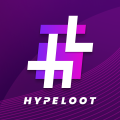승진
ICO 게시
동전
Calendar
암호화 이벤트
뉴스
DeFi
NFT
WEB3
Games
동향
-
KO
English Русский Deutsch Español French Italian Portugues Indonesian Turkish Dutch العَرَبِيَّة বাংলা 中文(简体) 한국 हिन्दी 日本語
- 로그인

인터넷은 분권화되도록 설계되었지만 시간이 갈수록 에, 그것은 몇몇 대기업의 통제하에 떨어졌습니다. 이 통합은 데이터 소유에 대한 주요 위협을 나타냅니다. 시장 및 언론의 자유를 보장합니다.
인터넷의 건축가는 여러 가지 일을 올바르게 처리했지만 또한 원래 디자인의 보안에 집중하지 못했습니다. 같이 그 결과, 인터넷 사용자는 어디에서나 안전성이 떨어졌으며 자신의 데이터를 훨씬 더 큰 위험에 처하게했습니다.
Blockstack은 사용자를 다시 통제 할 수있는 방법입니다. 디지털 생활.
Blockstack을 사용하면 사용자는 자신의 신원을 소유 할 수있는 디지털 키를 얻을 수 있습니다. 원격 서버 나 ID 제공자없이 로컬로 앱에 로그인합니다.
Blockstack의 스토리지 시스템을 사용하면 사용자가 자체 스토리지 공급자를 데리고 데이터를 제어 할 수 있습니다. 데이터는 암호화되어있어 응용 프로그램간에 쉽게 공유 할 수 있습니다.
Blockstack은 간단한 피어 투 피어 지불을 위해 Bitcoin 및 기타 암호화 통화를 사용합니다. 개발자는 다운로드, 구독 등을 청구 할 수 있습니다.
검증 됨 0%
주의. 확인되지 않은 회원은 실제로 팀원이 아닌 위험이 있습니다.
검증 됨 0%
주의. 확인되지 않은 회원은 실제로 팀원이 아닌 위험이 있습니다.









Blockstack redefines cloud computing by putting application data back in the hands of the users. The design behind their generic protocols allow developers to easily utilize blockchain technology as well as integrate a variety of secured user-identity based data and settings into their apps. This company has been around before the ICO buzz hit the crypto scene, and as a result their product has been well refined over the course of several years of research and development. In Blockstack's perfect world, we would see leaders such as Facebook and Google begging to structure around P2P technology as a last ditch effort to continue it's stronghold on user data, and this could be case, but only in the distant future as expectations have it.
Blockstack's decision to whitelist investors is a favorable plan, but screening users based on accreditation seems unfair to the community. To alleviate this Blockstack has also chosen to provide vouchers as investment vehicles for their ICO. Using a proof-of-burn mechanism to power inherent functionality will be effective for long term coin value and business development. That being said, this coin has a great vision, and a long term hold seems like a great idea, but finding reason to invest in the ICO instead of waiting till it inevitably takes a possible correction on an exchange is a different story.

















이 쿠폰은 쿠폰 제공자가 제공 한 정보 및 기타 공개적으로 제공되는 정보를 기반으로합니다. 토큰 판매 또는 교환 이벤트는 ICO 보유자와 전적으로 관련이 없으며 ICOholder는 이에 관여하지 않습니다 (기술 지원 또는 프로모션 포함). ICOholder와 관계가없는 사람들로부터 나열된 토큰 판매는 고객이 전반적인 토큰 부문에서 발생하는 활동을 추적하는 데 도움이되는 경우에만 표시됩니다. 이 정보는 귀하가 의지해야 할 조언에 해당하지 않습니다. 당사 사이트의 내용을 기반으로 한 조치를 취하거나 삼 가기 전에 전문가 또는 전문가의 자문을 구하거나 자신의 실사를 수행해야합니다. 토큰 획득과 관련하여 참가자가 입력 한 조건은 토큰과 ICO 소유자의 발행인이 그러한 토큰의 판매자가 아닙니다. ICO 소유자는 토큰 판매와 관련하여 제 3 자의 진술에 대해 법적 책임이 없으며 계약 위반에 대한 청구는 여기에 열거 된 토큰 발행 기관과 직접 체결해야합니다.
이 토큰 판매 또는 관련 인물의 성격, 적법성 또는 합법성에 대해 우려되는 점이 있으면 info@icoholder.com 에 문의하십시오. 귀하의 우려 사항에 대한 자세한 정보를 제공하십시오.